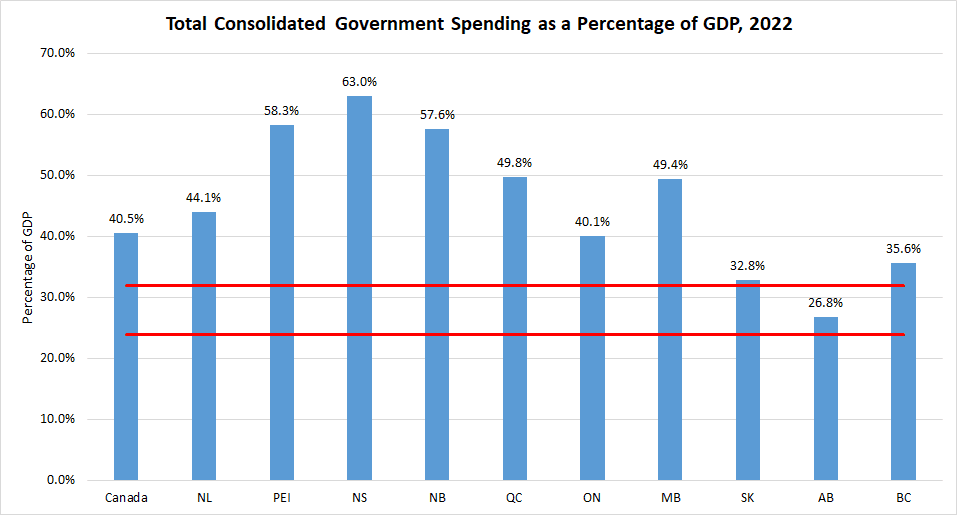Growing the government won’t help Canada’s economy

Canada is suffering from an economic growth crisis, and governments across the country should reassess their policies. Governments (particularly the federal government) have recently taken a more active role in the economy through increased spending and bureaucracy. However, policymakers must take a step back and recognize that growing government doesn’t lead to growth in the economy.
Canada’s economy has been stagnant for the last decade. From 2013 to 2022, per-person GDP (a broad measure of living standards) grew at its slowest pace since the 1930s, after accounting for inflation. And more recent data show that in the fourth quarter of 2023, per-person GDP (inflation-adjusted) stood at $58,111—which is $51 per person lower than it was at the end of 2014. Simply put, Canadians have experienced a decade of dismal growth, and are now actually worse off than they were a decade ago.
During this time, many governments in Canada have adopted an approach of greater involvement in the economy and significantly higher spending. Take the federal government, for example.
Since 2014/15, the government has increased annual program spending (total spending minus debt interest) by roughly 75 per cent, from $256.3 billion to $448.2 billion in 2022/23. Moreover, the Trudeau government has recorded the five-highest years of federal spending in Canadian history, after accounting for population growth and inflation. Much of this spending has gone towards expanding the Ottawa’s role in the economy through increased transfers, business subsidies or new programs such as $10-a-day daycare and national dental care.
Provincial governments in Quebec, Nova Scotia and British Columbia (to name a few) have also recently reached historical highs in per-person program spending (even after excluding COVID-related spending). Simply put, governments across the country have been increasing spending and becoming more involved in the economy.
One way to measure the size of government, that allows for the comparison of jurisdictions over time, is known as total consolidated government spending as a share of GDP. This measure includes all spending at the local, provincial and federal levels in a jurisdiction and compares that level to the size of the economy.

According to a recent study, in 2022 (the latest year of available data) the size of government in Canada was 40.5 per cent of GDP compared to 38.2 per cent in 2014.
Among the provinces, total government spending ranged from 26.8 per cent of GDP in Alberta to 63.0 per cent of GDP in Nova Scotia. Compared to 2014, the size of government grew in eight of 10 provinces—only Prince Edward Island and B.C. experienced declines in government spending as a share of the economy. It’s also important to note that this is simply government spending. The true size of government, when accounting for things like regulation, is even larger.
Growing government matters because it influences economic growth. When the size of government is below a certain level, it lacks the resources to deliver services such as policing, courts or national defence—which are essential to a functioning economy. On the other hand, when government is too big it engages in activities best left to the free market and effectively crowds-out private-sector activity that contributes to economic growth. Therefore, when a government is too small or too big, economic growth (and consequently living standards) suffer.
Empirical research suggests that economic growth is maximized when the size of government falls between 24 and 32 per cent of GDP. In other words, when governments spend in excess of this range, the economy will not grow as much as it would if government operated within that threshold—all else equal. Based on the numbers presented above, it’s clear the vast majority of governments in Canada are too big. For nine of 10 provinces and the federal government, their spending exceeded 32 per cent of GDP in 2022.
As Canadians look for solutions to address a stagnating economy and falling living standards, governments should recognize that taking a more active role in the economy won’t solve the problem—and will likely make it worse.

